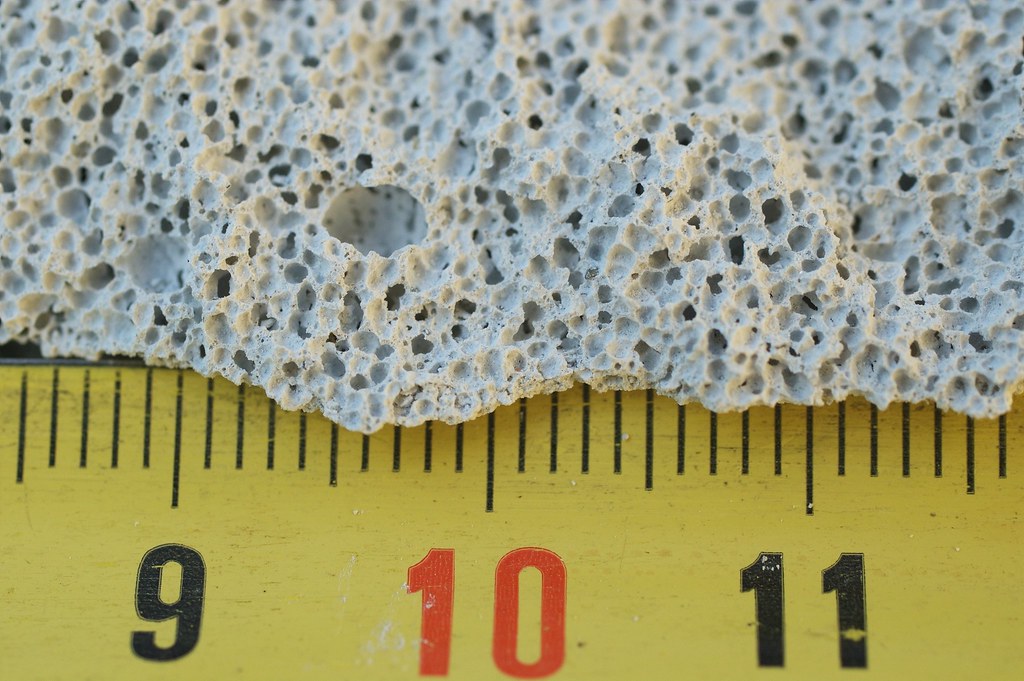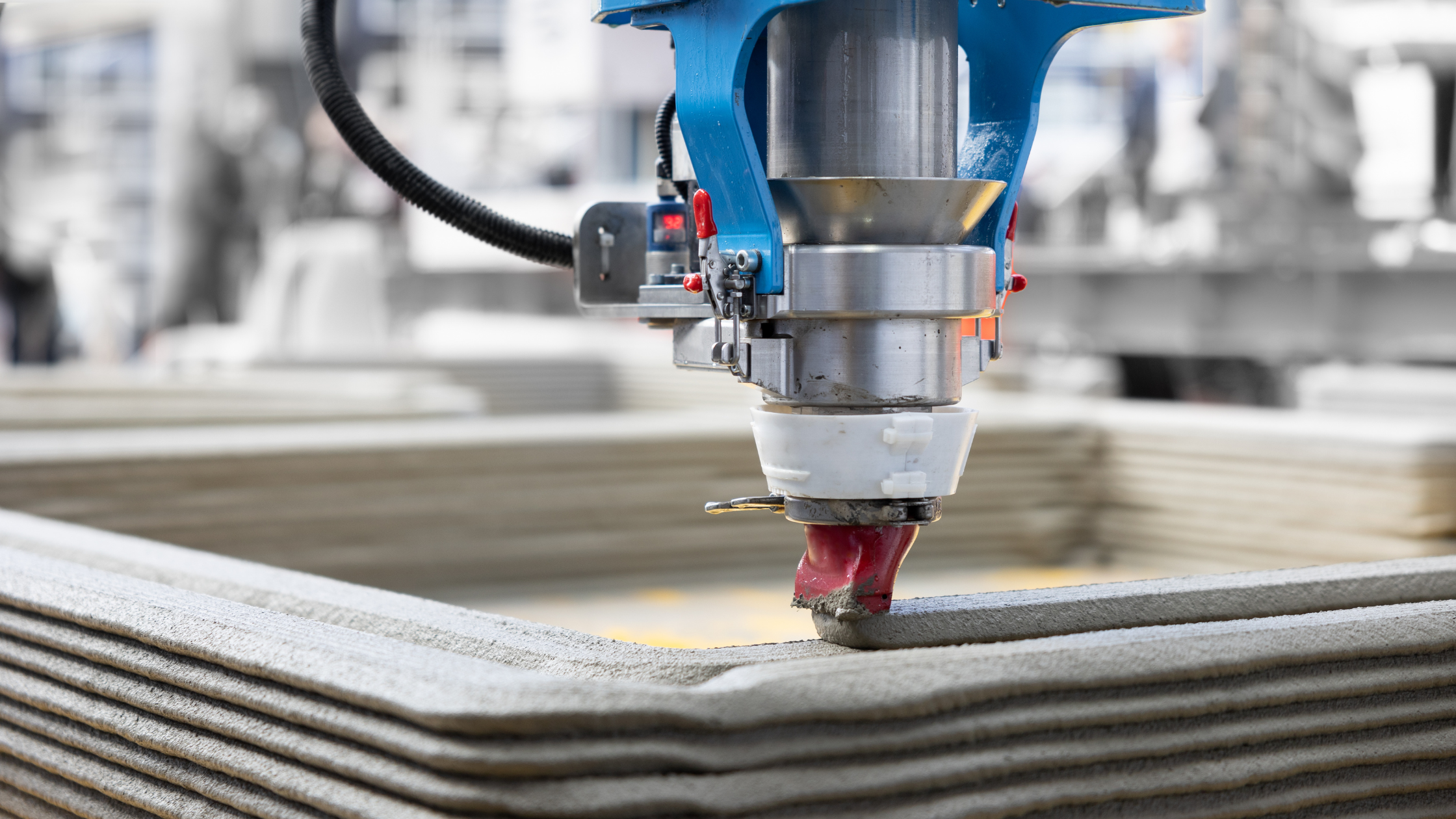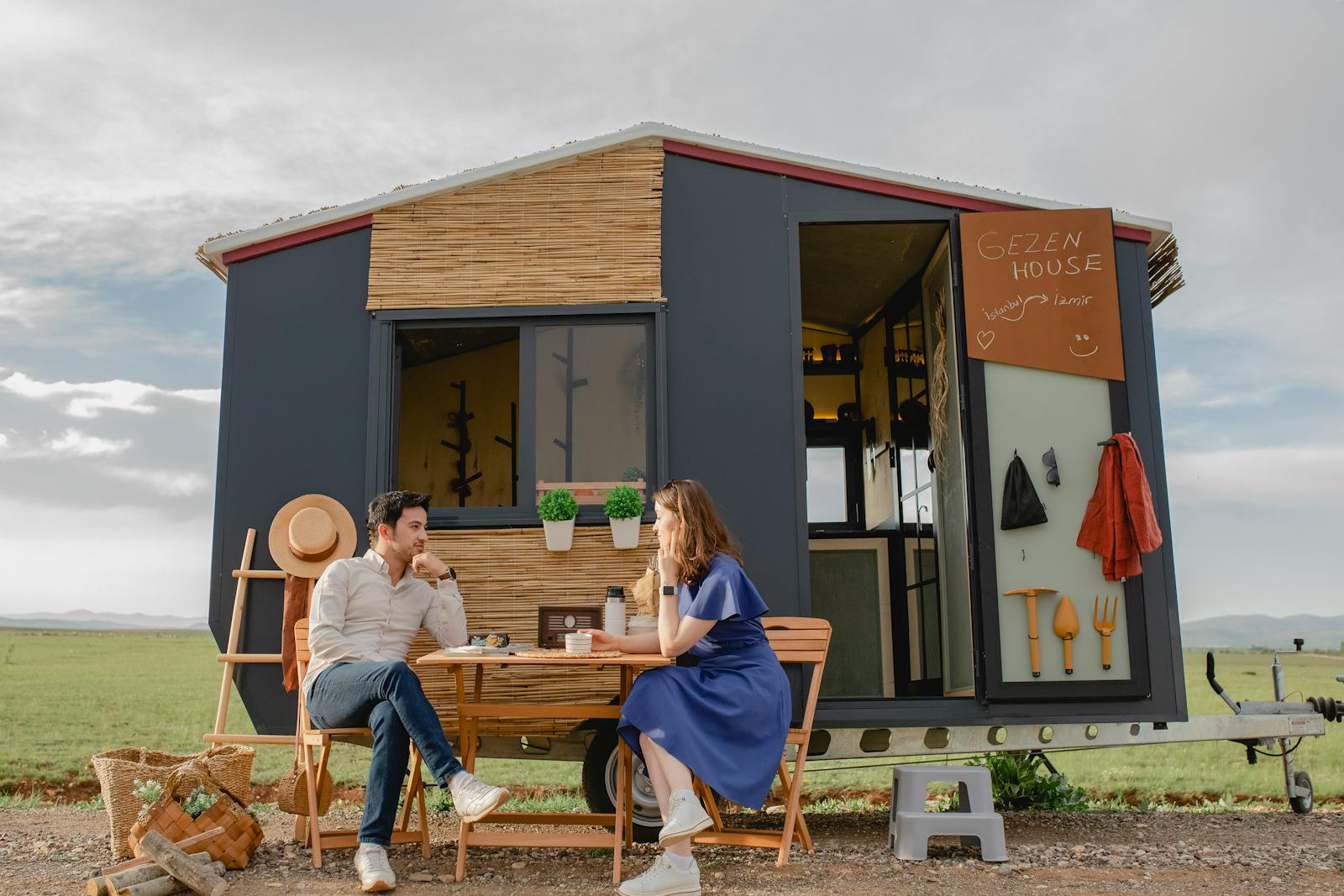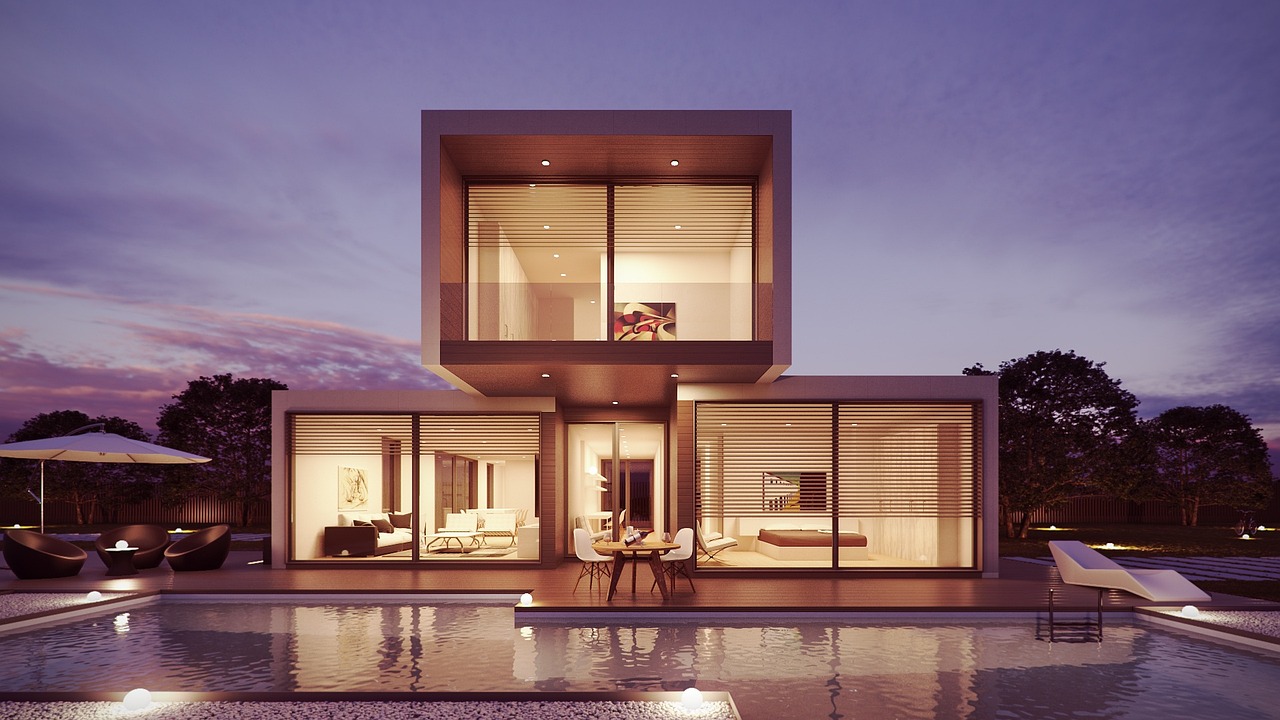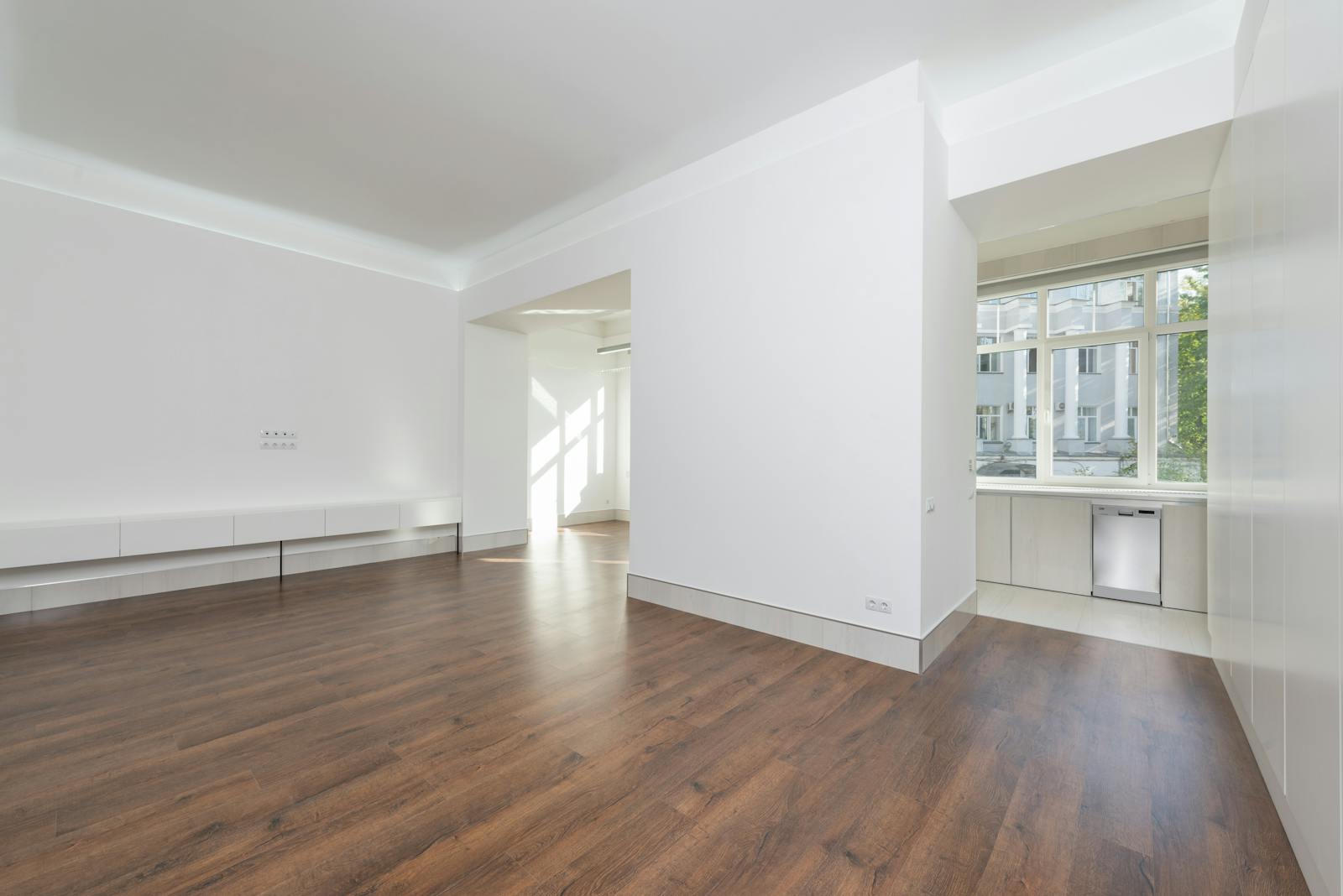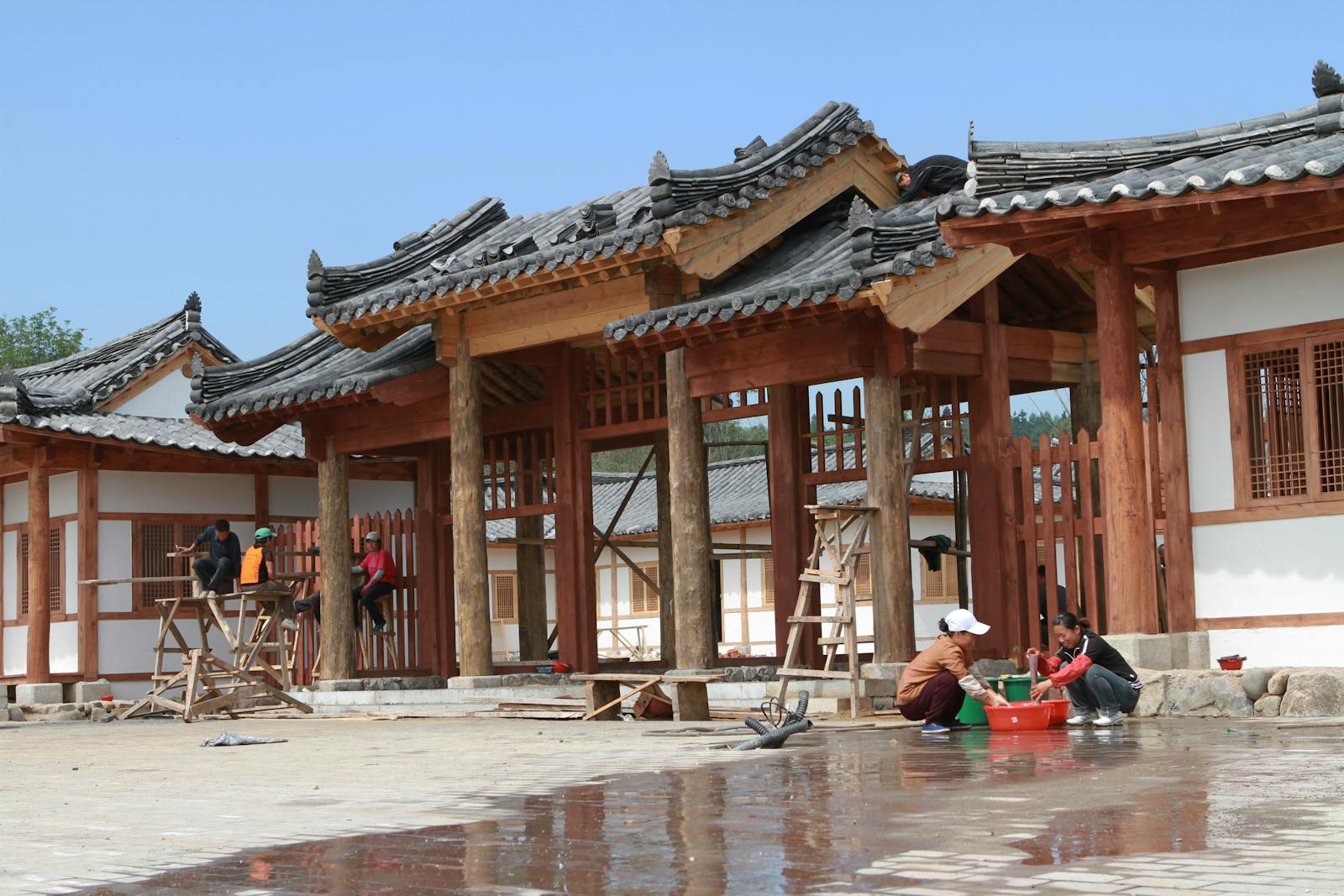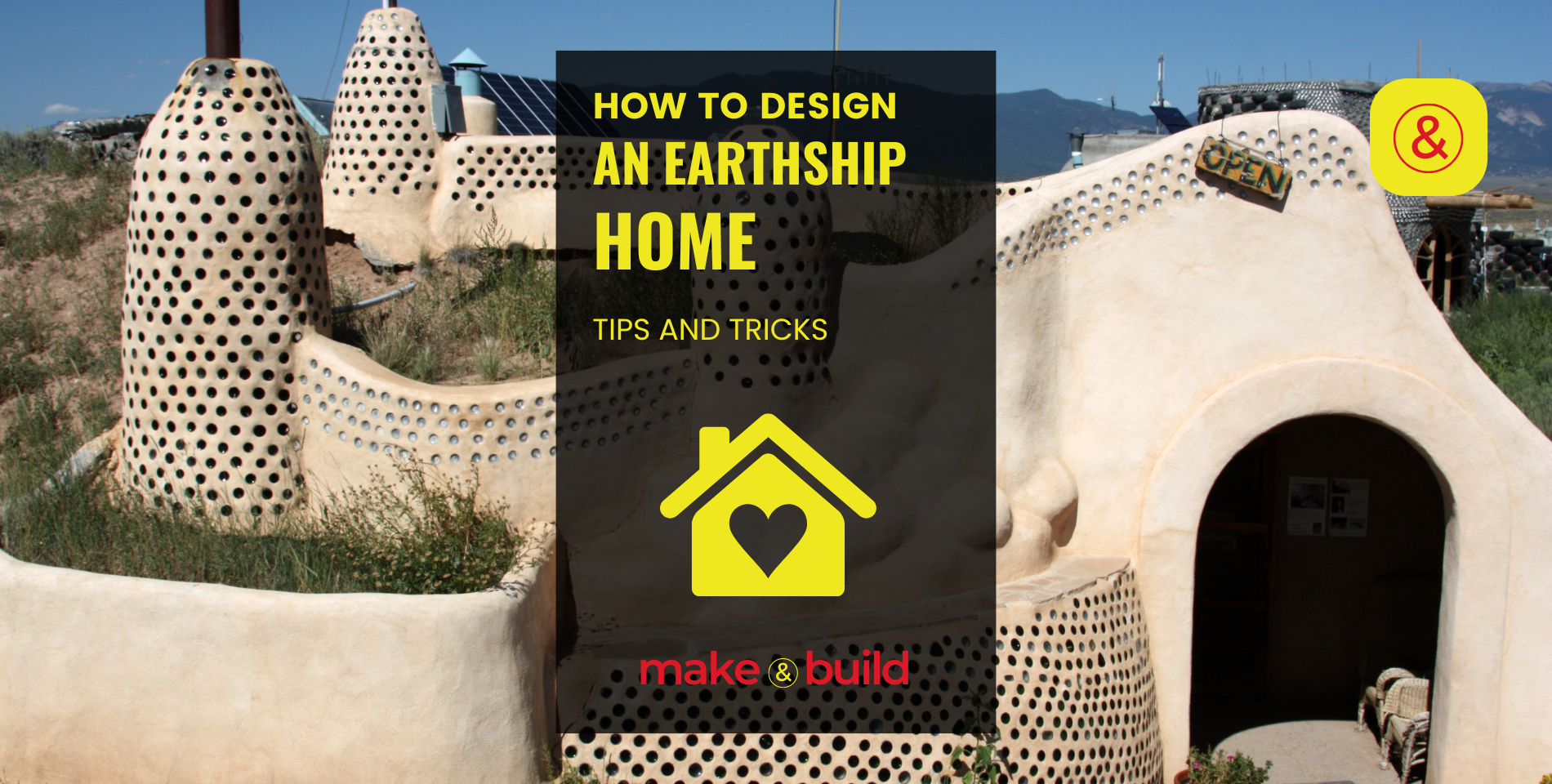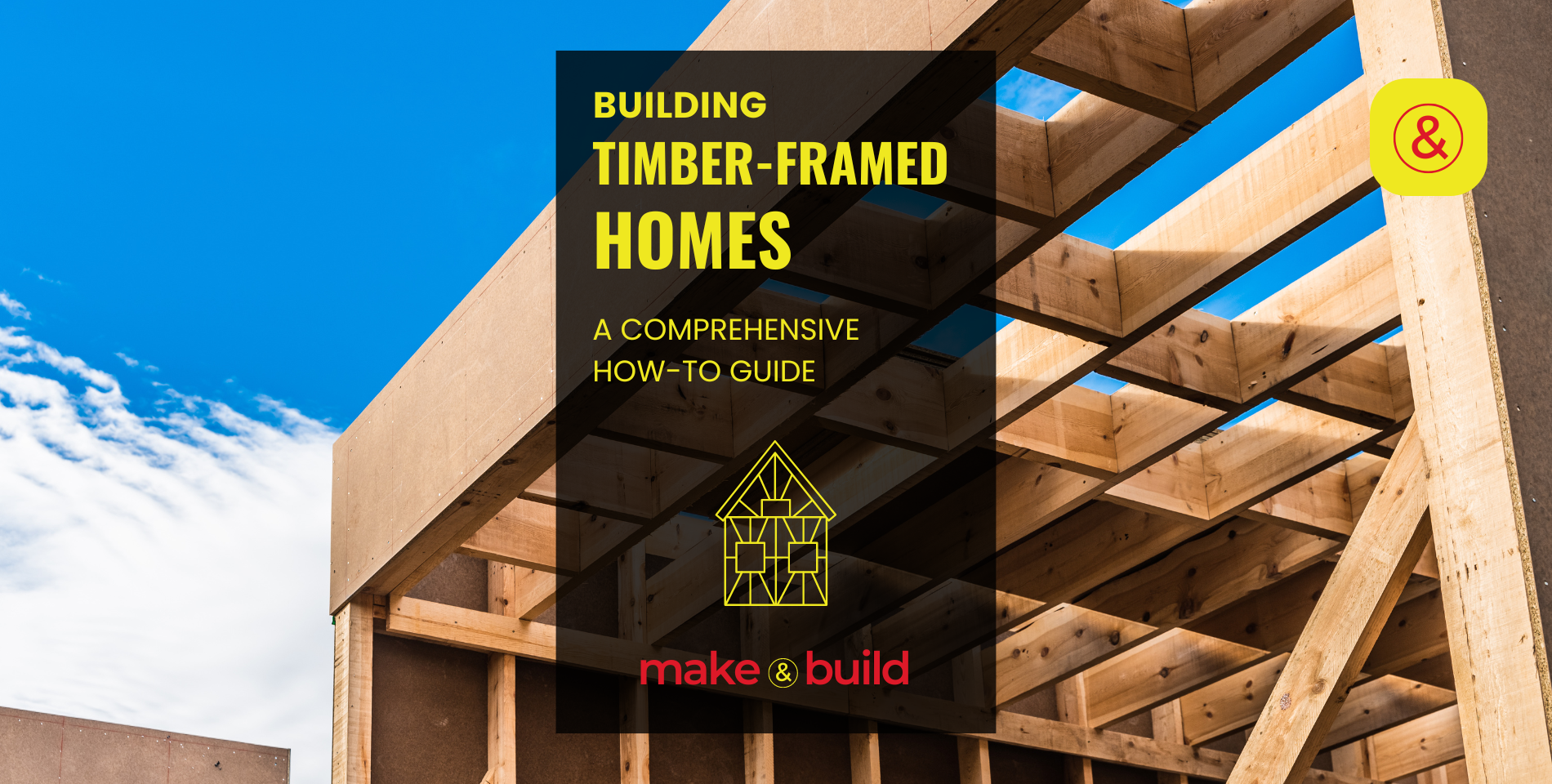AirCrete Homes (Lightweight Concrete)
AirCrete is a lightweight, aerated concrete material infused with tiny air bubbles, offering high insulation, durability, and affordability for eco-friendly construction.
AirCrete Homes (Lightweight Concrete)
AirCrete is a lightweight, aerated concrete material infused with tiny air bubbles, offering high insulation, durability, and affordability for eco-friendly construction.
AirCrete Home Building Insights
✅ Overall Building Method Score
🏠 Overall Durability Score
🛠️ Structural Integrity Score
🏠 Indoor Air Quality & Non-Toxicity Score
🔥 Fire Resistance Score
🌊 Flood Resistance Score
💨 Hurricane/Wind Resistance Score
🌎 Earthquake Resistance Score
🐜 Pest Resistance Score
❄️ Insulation Efficiency Score
🔇 Soundproofing Score
🔋 Energy Efficiency Score
♻️ Eco-Friendliness Score
📍 Material Availability Score
🚀 Construction Speed Score
🔨 DIY Friendliness Score
👷 Skilled Labor Requirement Score
🏡 Customization Score
🌦️ Weather Adaptability Score
🔄 Maintenance Requirement Score
🗑️ Waste Reduction Score
🏗️ Foundation Strength Score
🏙️ Urban Suitability Score
🛖 Off-Grid Suitability Score
🌱 Sustainability Rating Score
💰 Cost-Efficiency Score
📑 Permit & Regulation Difficulty Score
📈 Scalability Score
⏳ Material Longevity Score
🔥 Heat Retention Score
❄️ Cooling Efficiency Score
📖 Building Method Overview:
AirCrete is a cement-based material that incorporates foamed air bubbles, creating a lightweight, highly insulating, and cost-effective alternative to traditional concrete. Developed as a DIY-friendly and sustainable construction method, AirCrete provides exceptional thermal resistance, fire resistance, and mold resistance. The process involves mixing Portland cement with a foaming agent, which creates uniform air pockets that enhance insulation and reduce material weight.
AirCrete homes are often built in dome shapes, making them energy-efficient and structurally resilient against earthquakes, hurricanes, and extreme weather conditions. This method is particularly popular among off-grid builders, sustainable housing advocates, and cost-conscious homeowners looking for a low-cost, durable, and highly customizable building solution.
🏗️ Primary Materials Used
- Portland Cement
- Foaming Agent (Dish Soap, Commercial Foamers)
- Water
💰 Estimated Cost Per Square Foot
$10 – $40 per sq. ft. (varies based on labor and customization)
⏳ Average Construction Time
4 – 12 weeks (depending on design complexity and DIY vs. contractor-built projects)
🌎 Best Climate for This Method
All Climates (performs well in hot, dry, humid, and cold environments due to its high insulation properties)
🏠 Structural Durability
- Resistant to fire, pests, mold, and extreme weather
- May require reinforcement for high load-bearing structures
🏡 Common Applications
- Tiny Homes
- Off-Grid Housing
- Eco-Friendly & Sustainable Homes
- Disaster-Resistant Shelters
🎨 Architectural Compatibility
- Minimalist
- Sustainable & Eco-Friendly
- Modern Dome & Organic Designs
⚡ Energy Efficiency
High (excellent thermal insulation, reducing heating and cooling costs)
📜 Origin of Method
- Developed in the mid-20th century as an alternative to traditional concrete.
- Gained popularity through DIY and sustainable housing movements.
🌍 Most Common Locations
United States, Mexico, Australia, India, and parts of Africa.
🏛️ Earliest Known Example
Experimental lightweight concrete homes built in the 20th century as a response to high material costs.
🎭 Cultural Influence
Popular among alternative and off-grid living communities.
📊 Popularity Today
Growing interest in affordable, energy-efficient housing solutions.
🏙️ Urban vs. 🌲 Rural Suitability
Better suited for rural and off-grid developments due to unconventional design aesthetics.
🌡️ Best Climate Adaptation
Performs well in all climates, with superior insulation in cold regions and high heat resistance in hot climates.
🗺️ Best Geographic Terrain
Suitable for flatlands, deserts, coastal regions, and rural landscapes.
⏳ Typical Lifespan
50+ years (with proper maintenance and reinforcement in high-load areas).
🪵 Primary Load-Bearing Material
Reinforced AirCrete walls and domes (may require additional structural support for larger builds).
🌪️ Resistance to Natural Disasters
- Earthquake-resistant (flexible and lightweight construction reduces impact damage)
- Hurricane-resistant (dome structures reduce wind resistance)
- Fireproof & Mold-Resistant (non-combustible material and resistant to water damage)
📜 Required Building Permits
Moderate difficulty (zoning and code approvals vary by location due to alternative design styles).
🔨 DIY vs. 👷 Contractor Needed?
- DIY-friendly (many homeowners build AirCrete homes themselves with simple tools and training).
- Contractors required for larger-scale or structurally complex projects.
🔄 Ease of Expansion
Moderate (can be expanded with additional domes or reinforced AirCrete walls).
💨 Indoor Air Quality
Excellent (non-toxic, breathable material with no VOC emissions).
🔇 Acoustic Performance
Good (reduces noise but not fully soundproof).
♻️ Material Sustainability
Highly sustainable (uses fewer resources, minimal waste, and natural insulation properties).
🗑️ Construction Waste Output
Minimal (lightweight material means less transport and excess waste).
🌞 Thermal Regulation
Superior (high insulation value keeps homes warm in winter and cool in summer).
🐜 Pest & Mold Resistance
Very high (inorganic material prevents termite, rodent, and mold infestations).
🔥 Fire Resistance Level
Highly fireproof (non-combustible material does not support flames).
⚖️ Structural Weight
Lightweight (compared to standard concrete, reducing foundation requirements).
🎨 Customization Flexibility
High (easily shaped, carved, or reinforced for unique designs).
🔋 Most Common Energy Pairing
Solar, wind, and geothermal systems for off-grid homes.
🧊 Best Insulation Pairing
None required (AirCrete itself acts as high-efficiency insulation).
🌱 Environmental Impact Score
Low (sustainable, uses fewer materials, and reduces carbon footprint).
🛕 Common Countries Using This Method
United States, Canada, Mexico, Australia, India, and Africa.
🏗️ Alternative Methods
- Rammed Earth (similar in sustainability but heavier and less insulated)
- Cob Homes (eco-friendly but slower to build and requires more labor)
- 3D-Printed Concrete Homes (similar cost and material efficiency but requires industrial-level machinery)
🏰 Famous Example of This Method
Domegaia AirCrete Dome Homes (popularized by sustainable living advocate Hajjar Gibran).
📜 The Historical Evolution of AirCrete Homes
🏗️ Origins of AirCrete – The Quest for Lightweight Concrete
The idea of lightweight concrete dates back to ancient Rome, where volcanic ash (pozzolana) was used to create lighter, more durable concrete structures. Over time, builders experimented with adding air bubbles to reduce material weight while maintaining strength.
In the 20th century, cellular concrete emerged as an innovative solution for insulation and fire resistance. Early forms, such as Autoclaved Aerated Concrete (AAC), became popular in Europe and Asia, particularly for their thermal efficiency and ease of use in prefabricated construction.
🧪 Modern Development – The Birth of AirCrete
AirCrete, as we know it today, evolved from foamed concrete technology, which was initially used for industrial insulation and fireproofing. The technique of mixing Portland cement with foaming agents allowed for the creation of a lighter, more workable version of concrete without the need for specialized autoclaving processes.
By the 1990s and early 2000s, alternative homebuilders and sustainable construction advocates started exploring AirCrete for low-cost, energy-efficient housing. Notably, Hajjar Gibran, founder of Domegaia, pioneered DIY-friendly AirCrete dome homes, demonstrating their affordability, strength, and adaptability for off-grid living.
🌍 Expansion & Adoption Around the World
As interest in affordable and eco-friendly housing grew, AirCrete became increasingly popular for tiny homes, off-grid communities, and disaster-resistant shelters. Some of the key reasons for its global adoption include:
- Low material costs, making it accessible in developing regions.
- DIY construction potential, reducing the need for skilled labor.
- Excellent insulation properties, making it ideal for extreme climates.
- Fireproof, pest-resistant, and mold-resistant, increasing its durability.
Countries such as the United States, Mexico, Australia, and India have seen a rise in AirCrete construction, particularly in sustainable housing projects and experimental eco-villages.
🏡 The Future of AirCrete in Construction
As demand for affordable, energy-efficient, and disaster-resistant housing increases, AirCrete is positioned to become a major player in sustainable construction. Future advancements may include:
- Reinforced AirCrete technologies for multi-story buildings.
- 3D-printed AirCrete structures for rapid deployment in disaster zones.
- Integration with smart building materials for automated climate control.
From its ancient Roman roots to modern eco-conscious communities, AirCrete represents a blend of innovation, sustainability, and accessibility, shaping the future of alternative construction methods worldwide. 🚀
📍 Geographic Suitability of AirCrete Homes
🌎 Versatility Across Climates and Terrains
AirCrete’s unique properties make it a highly adaptable construction material for a variety of climates and landscapes. Its lightweight, insulated, and fire-resistant nature allows it to perform well in both extreme heat and cold, making it suitable for diverse geographic locations.
🌡️ Climate Adaptation – Where Does AirCrete Work Best?
🏜️ Hot & Arid Climates (Deserts, Southwest U.S., Middle East, Australia)
✅ Excellent thermal insulation keeps interiors cool during the day and warm at night.
✅ Resistant to dry, harsh conditions with minimal cracking compared to traditional concrete.
⚠️ Requires moisture-resistant coatings to prevent long-term dryness-related brittleness.
❄️ Cold & Snowy Climates (Canada, Northern Europe, Russia)
✅ High insulation value (R-value) reduces heating costs in extreme winters.
✅ Can be designed as dome structures to minimize snow load impact.
⚠️ Requires proper waterproof sealing to prevent moisture penetration in freeze-thaw cycles.
🌧️ Humid & Rainy Climates (Southeast U.S., Amazon, Southeast Asia)
✅ Naturally mold and mildew-resistant, preventing common moisture-related issues.
✅ Performs well in high-humidity environments when sealed with proper coatings.
⚠️ Needs waterproofing layers to prevent prolonged exposure to excessive rain.
🌪️ Hurricane & High-Wind Zones (Gulf Coast, Caribbean, Southeast Asia)
✅ Dome-style AirCrete homes have natural wind resistance due to aerodynamic shape.
✅ Can withstand high winds and storm impact better than wood-frame houses.
⚠️ Vertical-walled AirCrete structures may need reinforcement for extreme storms.
🌋 Seismic & Earthquake-Prone Regions (California, Japan, Turkey, Indonesia)
✅ Lightweight nature reduces seismic force impact, lowering collapse risk.
✅ Reinforced AirCrete with embedded rebar or fiber additives improves earthquake resilience.
⚠️ Not ideal for multi-story buildings in earthquake zones unless reinforced.
🗺️ Geographic Terrain Suitability
🏜️ Desert & Rocky Landscapes
✅ Works well due to minimal water requirements for curing.
✅ Lightweight nature reduces the need for deep foundations in rocky areas.
⚠️ May require additional reinforcement for long-term structural stability.
🏕️ Off-Grid & Remote Locations
✅ DIY-friendly – can be mixed and poured with basic tools.
✅ Requires fewer materials and transport costs, making it ideal for rural settings.
✅ Low energy demands – pairs well with solar and off-grid systems.
🏙️ Urban vs. Rural Development
✅ More suited for rural or suburban areas due to alternative aesthetics.
✅ Can be custom-designed for sustainable communities and off-grid developments.
⚠️ Zoning and building code restrictions may limit use in some urban settings.
🌍 Where is AirCrete Most Popular?
📍 United States – Used in alternative living communities, off-grid housing, and experimental builds.
📍 Mexico – Gaining popularity due to affordable housing projects.
📍 Australia – Suitable for bushfire-resistant housing.
📍 India & Southeast Asia – Potential for low-cost, high-insulation housing.
📍 Europe – Increasing interest in eco-friendly construction techniques.
🏡 Final Verdict: A Climate-Resilient, Versatile Material
AirCrete homes are suitable for a wide range of climates, but proper sealing and reinforcement are key to maximizing durability. While best suited for off-grid, rural, and eco-conscious developments, AirCrete’s growing adoption in alternative housing markets makes it a promising material for sustainable construction worldwide. 🚀
🏗️ Structural Integrity of AirCrete Homes
Structural integrity is one of the most critical factors in determining the safety, durability, and resilience of a building method. AirCrete, while lightweight and highly insulating, has different strength properties compared to traditional concrete and masonry. Its structural performance depends on reinforcement techniques, design choices, and environmental conditions.
🛠️ How Strong is AirCrete?
AirCrete is lighter and more flexible than traditional concrete, which allows it to absorb and distribute forces differently. However, because it contains tiny air bubbles, it has lower compressive and tensile strength than standard concrete.
✅ Lightweight design reduces stress on the foundation.
✅ More flexible than traditional concrete, reducing brittleness.
✅ Fireproof, pest-resistant, and mold-resistant, enhancing longevity.
⚠️ Requires reinforcement for high-load applications and multi-story builds.
🔹 Compression Strength vs. Tensile Strength
| Structural Property | Performance in AirCrete | Notes |
|---|---|---|
| Compression Strength (Withstands weight from above) | ✅ Moderate (300-500 psi) | Less than standard concrete (~3,000 psi) but sufficient for single-story structures. |
| Tensile Strength (Resists bending & stretching) | 🟡 Low | Requires reinforcement (rebar, fibers, or mesh) to prevent cracking and increase durability. |
🌪️ How Well Does AirCrete Withstand Natural Forces?
| Structural Challenge | Performance | Notes |
|---|---|---|
| Wind & Hurricanes | 🟡 Moderate | Dome structures perform well, but flat-walled designs need additional reinforcement. |
| Earthquakes | 🟡 Moderate | Can flex under seismic activity, but reinforcement is recommended. |
| Flooding & Water Damage | 🟡 Moderate | Water-resistant but requires waterproof coatings to prevent long-term damage. |
| Fire Resistance | ✅ High | Completely non-combustible, making it an excellent fireproof material. |
| Pest Resistance | ✅ Very High | AirCrete is inorganic, meaning it cannot be eaten by termites, rodents, or insects. |
🛠️ Reinforcement Methods for Stronger AirCrete Homes
To improve load-bearing capacity and overall structural performance, several reinforcement techniques are recommended:
🔗 Steel & Rebar Reinforcement
- Embedding steel rebar or wire mesh within AirCrete walls increases tensile strength.
- Used in seismic zones and multi-story buildings.
🧬 Fiber-Reinforced AirCrete
- Adding glass fibers, basalt fibers, or polymer reinforcements helps prevent cracking.
- Improves flexibility and impact resistance.
🧱 Hybrid Construction (AirCrete + Traditional Reinforcements)
- Using AirCrete in combination with traditional concrete (for load-bearing areas) enhances stability.
- Example: AirCrete walls with a reinforced concrete foundation and framing.
📊 Structural Integrity Score Breakdown (0-100)
| Category | Score | Notes |
|---|---|---|
| Overall Structural Integrity | 70 | Strong but requires reinforcement for high-load applications. |
| Compression Strength | 60 | Sufficient for single-story homes but weaker than standard concrete. |
| Tensile Strength | 50 | Needs reinforcement (rebar, fiber, mesh) for larger structures. |
| Fire Resistance | 95 | Completely non-combustible and excellent for fire-prone areas. |
| Wind & Storm Resistance | 65 | Dome designs excel, but flat-walled homes require structural support. |
| Earthquake Resistance | 75 | Flexible material reduces shock impact, but reinforcement improves safety. |
| Water & Flood Resistance | 70 | Water-resistant but benefits from additional waterproof coatings. |
| Pest & Mold Resistance | 95 | Non-organic, making it immune to termites, rodents, and mold. |
💡 Conclusion: Is AirCrete Structurally Reliable?
✔️ AirCrete is strong enough for single-story, dome-style, and off-grid homes but benefits from reinforcement for larger structures.
✔️ It excels in fire resistance, pest resistance, and insulation but needs additional waterproofing in wet climates.
✔️ Proper reinforcement (rebar, fibers, hybrid construction) significantly improves its performance in earthquakes, storms, and high-load environments.
✔️ As technology advances, stronger and more adaptable AirCrete formulations will improve its long-term durability.
🚀 For lightweight, affordable, and eco-friendly housing, AirCrete remains a promising alternative in sustainable construction.
💰 Cost Breakdown of AirCrete Homes
One of the biggest advantages of AirCrete construction is its affordability compared to traditional building methods. The low cost of materials, energy efficiency, and DIY-friendliness make it an attractive choice for budget-conscious builders. However, factors like reinforcement, labor, and finishing materials can impact the final cost.
📊 Estimated Cost Per Square Foot
- DIY AirCrete Build: $10 – $20 per sq. ft.
- Contractor-Built AirCrete Home: $20 – $40 per sq. ft.
- Traditional Concrete Home for Comparison: $100 – $250 per sq. ft.
💡 AirCrete homes can cost up to 80% less than traditional concrete homes, depending on design complexity and labor costs.
🏗️ Major Cost Factors in AirCrete Construction
1️⃣ Raw Materials Costs
| Material | Estimated Cost | Notes |
|---|---|---|
| Portland Cement | $10 – $15 per 94 lb bag | Primary ingredient of AirCrete. |
| Foaming Agent | $30 – $100 per gallon | Can be made with dish soap or purchased commercially. |
| Water | Minimal cost | Readily available, but curing time varies by climate. |
| Rebar / Mesh Reinforcement | $0.50 – $1.50 per sq. ft. | Needed for multi-story or high-load structures. |
| Sealers / Waterproof Coatings | $0.75 – $3 per sq. ft. | Helps prevent moisture penetration. |
✅ Lower material costs than traditional concrete.
✅ Foaming agent reduces cement usage, making AirCrete more affordable.
⚠️ Reinforcement costs add to final pricing in certain builds.
2️⃣ Labor Costs
| Labor Type | DIY Build | Professional Contractor |
|---|---|---|
| Mixing & Pouring | ✅ Free (DIY) | 💰 $10 – $20 per hour |
| Reinforcement Installation | ✅ Free (DIY) | 💰 $15 – $30 per hour |
| Finishing (Plaster, Paint, Flooring) | 💰 $5 – $15 per sq. ft. | 💰 $10 – $25 per sq. ft. |
| Total Estimated Labor | $0 – $20 per sq. ft. | $20 – $40 per sq. ft. |
✅ DIY-friendly, reducing overall costs for homeowners willing to build themselves.
✅ Less labor-intensive than traditional construction.
⚠️ Hiring contractors increases costs significantly, especially for finishing work.
3️⃣ Additional Costs to Consider
| Category | Estimated Cost | Notes |
|---|---|---|
| Foundation (Concrete Slab / Footing) | $5 – $15 per sq. ft. | Essential for stability. |
| Windows & Doors | $2,000 – $10,000 total | Costs depend on quality and size. |
| Roofing (Dome or Flat) | $5 – $20 per sq. ft. | Dome roofs are often cheaper and more efficient. |
| Plumbing & Electrical | $3,000 – $15,000 total | Same cost as traditional homes. |
| Interior Finishes (Floors, Paint, Fixtures) | $10 – $50 per sq. ft. | Budget depends on customization. |
✅ Foundation and roofing costs are lower due to AirCrete’s lightweight nature.
✅ Minimal framing required, reducing structural costs.
⚠️ Interior finishing costs can be similar to traditional homes if high-end materials are chosen.
💰 Cost Comparison: AirCrete vs. Traditional Homes
| Expense Category | AirCrete Homes | Traditional Concrete Homes |
|---|---|---|
| Material Cost | ✅ Lower | ❌ Higher |
| Labor Cost | ✅ Lower (DIY possible) | ❌ Higher |
| Foundation Cost | ✅ Lower | ❌ Higher (heavier material) |
| Reinforcement Cost | ❌ Can be higher if needed | ✅ Standard |
| Finishing Cost | 🔄 Similar | 🔄 Similar |
| Total Cost Per Sq. Ft. | $10 – $40 | $100 – $250 |
✅ AirCrete is significantly cheaper for raw materials and labor.
✅ Ideal for cost-effective housing solutions, especially for off-grid and tiny homes.
⚠️ Higher reinforcement costs for multi-story structures.
💡 Final Verdict: Is AirCrete a Cost-Effective Building Method?
✔️ One of the most affordable construction methods available.
✔️ DIY-friendly nature reduces labor costs significantly.
✔️ Highly sustainable and energy-efficient, cutting long-term costs.
✔️ Finishing costs vary based on personal preferences.
✔️ Best suited for budget-conscious homeowners, off-grid builders, and sustainable housing projects.
🚀 For those seeking an ultra-low-cost, energy-efficient, and sustainable home, AirCrete is an excellent option!
🌱 Sustainability of AirCrete Homes
AirCrete is widely recognized as a sustainable, eco-friendly building material due to its low resource consumption, high energy efficiency, and minimal environmental impact. Compared to traditional concrete, it uses less cement, generates less waste, and requires fewer raw materials, making it a top choice for green building enthusiasts, off-grid living, and carbon-conscious construction projects.
♻️ What Makes AirCrete a Sustainable Building Material?
✅ 1. Low Cement Usage & Reduced Carbon Footprint
Traditional concrete production is a major contributor to CO₂ emissions, largely due to the manufacturing of Portland cement. AirCrete, by contrast:
- Uses less cement per cubic foot than standard concrete.
- Incorporates foamed air bubbles, reducing the need for dense raw materials.
- Lowers overall carbon emissions during production and transport.
💡 AirCrete significantly reduces cement consumption while maintaining structural performance.
✅ 2. Energy Efficiency & Thermal Performance
- High R-value insulation minimizes heating and cooling needs.
- Thermal mass properties help regulate indoor temperatures naturally.
- Reduces long-term energy use, lowering carbon footprint over the home’s lifespan.
💡 Less reliance on HVAC systems makes AirCrete homes exceptionally energy-efficient.
✅ 3. Minimal Construction Waste
- Easily molded and cast, reducing material offcuts.
- Can be recycled into new AirCrete batches, minimizing landfill waste.
- Produces virtually zero construction debris compared to wood or masonry builds.
💡 AirCrete supports zero-waste construction practices.
✅ 4. Water Conservation & Permeability
- Requires less water than traditional concrete during mixing.
- Can be made with recycled water sources, reducing freshwater consumption.
- Permeable AirCrete variants can allow for better natural drainage in eco-friendly landscaping.
💡 Lower water demand reduces environmental strain in drought-prone areas.
✅ 5. Renewable & Natural Additives
Some builders enhance AirCrete with sustainable additives such as:
- Natural fibers (hemp, cellulose) for reinforcement.
- Eco-friendly foaming agents instead of synthetic chemicals.
- Mineral-based coatings for waterproofing, avoiding toxic sealants.
💡 The use of renewable materials makes AirCrete even greener.
🌍 How Sustainable is AirCrete Compared to Other Building Methods?
| Sustainability Factor | AirCrete | Traditional Concrete | Wood Framing |
|---|---|---|---|
| CO₂ Emissions | ✅ Low | ❌ High | 🟡 Moderate |
| Energy Efficiency | ✅ Excellent | 🟡 Moderate | ❌ Low |
| Raw Material Use | ✅ Minimal | ❌ High | 🟡 Moderate |
| Waste Production | ✅ Very Low | ❌ High | ❌ High |
| Water Consumption | ✅ Low | ❌ High | 🟡 Moderate |
| Deforestation Impact | ✅ None | ✅ None | ❌ High |
💡 Compared to traditional materials, AirCrete offers superior sustainability while remaining cost-effective.
🌎 Sustainability Score Breakdown (0-100)
| Category | Score | Notes |
|---|---|---|
| Overall Sustainability Rating | 90 | Highly sustainable due to low material usage and energy efficiency. |
| Carbon Footprint Reduction | 85 | Uses less cement than traditional concrete, lowering CO₂ emissions. |
| Energy Efficiency | 90 | High R-value insulation reduces energy use. |
| Waste Reduction | 95 | Produces minimal construction waste and can be recycled. |
| Water Conservation | 85 | Requires significantly less water than traditional concrete. |
| Renewable Material Use | 80 | Can incorporate natural additives like hemp and mineral-based foams. |
💡 Final Verdict: Is AirCrete a Sustainable Building Choice?
✔️ Uses significantly fewer raw materials and emits less CO₂ than traditional concrete.
✔️ Highly energy-efficient, reducing reliance on fossil fuels for heating and cooling.
✔️ Supports zero-waste construction with minimal material waste.
✔️ Can be combined with other sustainable techniques like solar energy and rainwater harvesting.
✔️ One of the most affordable and eco-friendly building materials available today.
🚀 For builders prioritizing affordability, energy efficiency, and sustainability, AirCrete is an outstanding choice!
⚡ Energy Efficiency & Insulation of AirCrete Homes
One of AirCrete’s biggest advantages is its superior insulation and energy efficiency. Its lightweight, aerated structure creates millions of tiny air pockets, making it naturally resistant to heat transfer. Compared to traditional concrete, wood, and brick, AirCrete provides better thermal performance, leading to lower energy costs and increased indoor comfort.
🏡 Why is AirCrete Highly Energy Efficient?
✅ 1. High R-Value for Superior Insulation
AirCrete has a much higher R-value (insulation rating) than standard concrete due to its air-filled composition.
| Material | Estimated R-Value (per inch) | Notes |
|---|---|---|
| AirCrete | 3.9 – 6.0 | Higher than traditional concrete and cinder blocks. |
| Traditional Concrete | 0.1 – 0.2 | Poor insulator, requires added insulation layers. |
| Brick | 0.8 – 1.2 | Provides some insulation, but not enough on its own. |
| Wood (Framing & Plywood) | 1.2 – 1.5 | Better than brick but still lower than AirCrete. |
💡 AirCrete insulates up to 10-20x better than traditional concrete, reducing heating and cooling costs.
✅ 2. Thermal Mass Properties for Passive Heating & Cooling
AirCrete acts as a thermal mass, meaning it absorbs heat during the day and slowly releases it at night, stabilizing indoor temperatures.
- Reduces overheating in hot climates by keeping interiors cooler.
- Minimizes heat loss in cold climates, maintaining warmth inside.
- Pairs well with passive solar design, maximizing natural energy efficiency.
💡 A properly designed AirCrete home can require little to no artificial heating or cooling.
✅ 3. Airtight Construction Reduces Energy Waste
AirCrete homes, especially dome structures, are naturally airtight, meaning:
- Fewer drafts and heat leaks compared to traditional construction.
- Lower reliance on HVAC systems, saving energy costs.
- Reduces indoor humidity variations, improving comfort.
💡 AirCrete’s airtight properties make it an excellent choice for extreme climates.
✅ 4. Works with Other Energy-Efficient Technologies
AirCrete homes are often built with renewable energy and passive design strategies, including:
- Solar panels – Works well with off-grid energy systems.
- Geothermal heating & cooling – Complements AirCrete’s thermal efficiency.
- Radiant floor heating – Effective due to AirCrete’s even heat distribution.
- Smart home automation – Further optimizes energy savings.
💡 AirCrete integrates seamlessly with modern, energy-efficient building systems.
🔇 Soundproofing Performance
Thanks to its aerated structure, AirCrete also provides excellent sound insulation, making it ideal for urban areas, home studios, and quiet living spaces.
| Soundproofing Factor | AirCrete Performance |
|---|---|
| Noise Reduction Coefficient (NRC) | 0.7 – 0.9 (High) |
| Impact Sound Transmission | ✅ Very low (absorbs vibrations well) |
| Airborne Noise Reduction | ✅ Reduces outdoor & traffic noise significantly |
💡 AirCrete offers a quieter, more peaceful indoor environment than traditional construction.
📊 Energy Efficiency & Insulation Score Breakdown (0-100)
| Category | Score | Notes |
|---|---|---|
| Overall Energy Efficiency | 90 | Excellent thermal regulation and minimal energy loss. |
| Insulation Performance (R-Value) | 95 | Outperforms traditional concrete, brick, and wood. |
| Airtightness & Draft Reduction | 85 | Dome designs perform best for preventing air leaks. |
| Thermal Mass Benefits | 90 | Helps regulate indoor temperatures naturally. |
| Soundproofing Performance | 85 | Great for noise reduction, making it ideal for quiet homes. |
| Compatibility with Solar & Renewable Energy | 95 | Works extremely well with passive solar, geothermal, and solar power. |
💡 Final Verdict: Is AirCrete an Energy-Efficient Building Material?
✔️ One of the best insulating materials for sustainable construction.
✔️ Reduces heating and cooling costs by up to 50-70%.
✔️ Works well in extreme climates, from deserts to cold regions.
✔️ Naturally airtight, reducing drafts and heat loss.
✔️ Pairs well with solar panels, passive heating, and smart home technology.
🚀 For anyone looking for an ultra-efficient, eco-friendly, and cost-saving home, AirCrete is one of the best choices available!
🔄 Maintenance & Longevity of AirCrete Homes
AirCrete is designed to be a low-maintenance, long-lasting building material, offering durability against fire, pests, and mold while maintaining high insulation properties. However, like all construction materials, proper maintenance and finishing techniques are necessary to ensure its longevity, especially in wet and extreme climates.
⏳ How Long Do AirCrete Homes Last?
With proper construction and sealing, AirCrete structures can last 50+ years, similar to traditional masonry homes. Because it does not rot, rust, or degrade like organic materials, it remains structurally sound over time.
✅ Resistant to termites, rodents, and insects
✅ Fireproof, preventing structural damage from wildfires
✅ Water-resistant when properly sealed
✅ No mold growth, unlike wood or drywall
⚠️ Requires waterproof coatings to prevent moisture absorption over time
💡 Compared to traditional concrete, AirCrete is lighter and more insulating, but requires proper sealing to maximize its longevity.
🛠️ Common Maintenance Requirements
| Maintenance Task | Frequency | Notes |
|---|---|---|
| Exterior Waterproofing / Sealing | Every 5-10 years | Essential in wet climates to prevent moisture penetration. |
| Crack Inspection & Repairs | As needed | Small cracks can develop over time but are easily patched. |
| Roof Maintenance | Every 10-15 years | Dome roofs last longer; flat roofs may require resealing. |
| Interior Plaster or Paint Touch-ups | Every 5-10 years | Helps maintain aesthetics and durability. |
| Structural Reinforcement (if applicable) | Only for multi-story or high-load structures | Rebar and mesh should be properly installed during construction. |
✅ Minimal maintenance required compared to wood-frame homes
✅ No need for termite treatment or fireproofing
⚠️ Exterior coatings and occasional crack sealing are necessary to ensure long-term performance
🏗️ What Factors Affect the Longevity of AirCrete Homes?
✅ 1. Proper Waterproofing & Sealing
- AirCrete is naturally water-resistant but not fully waterproof.
- Applying silicone-based sealers or stucco coatings can prevent water damage and erosion.
- Dome-shaped homes naturally shed water better than flat-walled structures.
✅ 2. Climate Considerations
- Dry climates (Arizona, Australia, Mexico) – Minimal maintenance required.
- Wet climates (Pacific Northwest, Southeast Asia, tropical areas) – Regular waterproofing is essential.
- Cold climates (Canada, Russia, Scandinavia) – Ensuring proper freeze-thaw resistance prevents cracks.
✅ 3. Structural Reinforcement
- Single-story homes require little reinforcement, making them highly durable.
- Multi-story homes or homes in high-wind areas should incorporate rebar or mesh for added strength.
- Proper foundation design prevents settling or shifting over time.
📊 Maintenance & Longevity Score Breakdown (0-100)
| Category | Score | Notes |
|---|---|---|
| Overall Longevity | 85 | Can last 50+ years with proper construction and maintenance. |
| Water Resistance | 70 | Needs proper waterproofing to prevent moisture issues. |
| Crack Resistance | 75 | Can develop hairline cracks but is easily repairable. |
| Fire Resistance | 95 | Completely fireproof and does not burn. |
| Pest Resistance | 95 | Fully resistant to termites, rodents, and insects. |
| Mold & Mildew Resistance | 90 | Does not support mold growth but needs moisture control. |
| Structural Durability | 80 | Strong enough for single-story homes, needs reinforcement for taller buildings. |
| Exterior Maintenance Needs | 75 | Requires coatings and sealers in wet environments. |
| Interior Maintenance Needs | 85 | Occasional touch-ups on plaster and paint. |
💡 Final Verdict: Is AirCrete a Long-Lasting, Low-Maintenance Building Material?
✔️ AirCrete is one of the most durable and low-maintenance construction methods available.
✔️ Fireproof, pest-proof, and mold-resistant, reducing long-term upkeep costs.
✔️ Can last 50+ years with minimal maintenance when properly sealed.
✔️ Ideal for dry and moderate climates, with additional waterproofing needed for wet areas.
✔️ Low-cost repairs (cracks, coatings) make maintenance affordable and easy.
🚀 For those seeking an affordable, long-lasting, and low-maintenance home, AirCrete is an excellent option—especially when built with proper waterproofing and reinforcement!
🎨 Design Flexibility & Customization of AirCrete Homes
One of the biggest advantages of AirCrete construction is its exceptional design flexibility. Unlike traditional concrete or wood-frame buildings, AirCrete is lightweight, easily shaped, and can be molded into virtually any architectural style. This makes it a popular choice for custom homes, off-grid dwellings, eco-villages, and experimental architecture.
🏡 How Versatile is AirCrete for Home Designs?
✅ Easily molded into custom shapes – Domes, curves, and unique structures are simple to create.
✅ Works for both traditional and futuristic designs – Suitable for minimalist, modern, organic, and classic styles.
✅ DIY-friendly customization – Owners can build unique features without requiring advanced construction skills.
✅ Lightweight structure reduces framing needs, allowing for open-concept interiors.
💡 From simple cabins to futuristic domes, AirCrete allows for nearly limitless design creativity!
🏗️ Common Architectural Styles for AirCrete Homes
| Style | Compatibility | Notes |
|---|---|---|
| Dome Homes | ✅ Highly compatible | One of the most popular uses of AirCrete due to its natural strength and efficiency. |
| Modern Minimalist | ✅ Easy to achieve | Smooth, curved, or geometric walls can be seamlessly built. |
| Traditional Homes | 🟡 Moderate | Rectangular builds work, but reinforcement may be required. |
| Eco-Villages & Off-Grid Homes | ✅ Perfect match | Lightweight, sustainable, and low-cost for communal living. |
| Organic & Free-Form Designs | ✅ Excellent | Custom sculpting and hand-crafted aesthetics are easy with AirCrete. |
| Multi-Story Buildings | 🟡 Limited | Additional reinforcement needed for structures beyond 1-2 stories. |
💡 Dome and curved structures maximize AirCrete’s strengths, while multi-story buildings require extra engineering.
🛠️ Custom Features That Can Be Built with AirCrete
Because AirCrete is easily shaped and poured, it allows for the seamless integration of custom design elements:
🏡 Unique Architectural Features
- Rounded, curved, or arched walls – No need for expensive framing.
- Custom-built countertops, benches, and shelves – AirCrete can be cast into any form.
- Sculpted entryways, alcoves, and niches – Adds natural, artistic beauty to interiors.
🪟 Window & Door Customization
- Easily cut rounded, square, or large panoramic windows.
- Works with standard or customized door frames.
- Supports passive solar design, maximizing natural light and energy efficiency.
🛁 Interior Customization
- Built-in furniture (seats, shelves, and counters) – Molded directly into walls.
- Creative bathroom and kitchen layouts – Works well with natural stone and tile finishes.
- Custom ceiling designs – Vaulted, domed, or open ceilings work easily with AirCrete.
💡 AirCrete eliminates the need for excessive framing and allows for sculpted, organic home designs!
🖌️ Finishing Options & Customization
Although AirCrete has a natural white-gray finish, it can be customized with various finishing techniques to achieve any aesthetic:
| Finishing Material | Compatibility | Notes |
|---|---|---|
| Stucco / Plaster | ✅ Perfect | Helps waterproof and adds durability. |
| Lime or Clay Plaster | ✅ Eco-friendly | Provides a natural, breathable surface. |
| Paint (Acrylic or Natural) | ✅ Easy | Works well if waterproofed first. |
| Tiles & Masonry | ✅ Highly compatible | Great for kitchens and bathrooms. |
| Wood Paneling | ✅ Possible | Can be attached for a rustic look. |
💡 AirCrete finishes range from sleek modern to warm, earthy, and natural aesthetics!
📊 Design Flexibility & Customization Score Breakdown (0-100)
| Category | Score | Notes |
|---|---|---|
| Overall Design Flexibility | 95 | One of the most versatile materials for unique designs. |
| Ease of Custom Shapes | 100 | Easily molded into curved, sculpted, and freeform shapes. |
| Compatibility with Traditional Home Styles | 75 | Can be used, but reinforcement may be needed. |
| Integration with Built-in Furniture & Features | 90 | Allows for custom seating, counters, and alcoves. |
| Finishing & Surface Customization | 85 | Supports various plasters, paints, and tiles. |
| Multi-Story Adaptability | 70 | Requires reinforcement for anything beyond two stories. |
💡 Final Verdict: Is AirCrete a Good Choice for Custom Homes?
✔️ Best for curved, dome, or freeform home designs—a top choice for futuristic and eco-friendly architecture.
✔️ Allows for built-in seating, furniture, and artistic sculpting.
✔️ Compatible with many interior and exterior finishing options.
✔️ DIY-friendly for self-builders who want a fully customized home.
✔️ Less suitable for rigid, multi-story designs unless reinforced.
🚀 For builders looking to create a unique, personalized, and sustainable home, AirCrete offers unparalleled design freedom!
⚖️ Pros & Cons of AirCrete Homes
AirCrete is a game-changing building material that offers affordability, sustainability, and exceptional insulation. However, like any construction method, it has both advantages and limitations depending on climate, design, and structural requirements. Below is an in-depth look at AirCrete’s pros and cons to help determine if it’s the right choice for your next build.
✅ Pros of AirCrete Homes
💰 1. Affordable Building Material
- AirCrete costs significantly less than traditional concrete, brick, or wood-framed construction.
- Uses less cement per cubic foot, reducing material expenses.
- Can be DIY-mixed and poured, eliminating high labor costs.
🏗️ 2. Lightweight & Easy to Work With
- Up to 60% lighter than standard concrete, reducing foundation and framing costs.
- Can be cut, shaped, and molded without specialized tools.
- Allows for easy transportation and on-site mixing.
🌱 3. Environmentally Friendly & Sustainable
- Uses fewer natural resources compared to traditional building materials.
- Lower CO₂ emissions since it requires less cement.
- Can be made with natural and non-toxic additives, reducing chemical exposure.
🔥 4. Fireproof & Disaster Resistant
- Completely non-combustible, making it ideal for wildfire-prone areas.
- Can withstand high temperatures without structural failure.
- Helps prevent fire spread in urban or off-grid communities.
🐜 5. Pest, Mold & Rot Resistant
- AirCrete is inorganic, meaning it doesn’t attract termites, rodents, or other pests.
- Mold and mildew cannot grow inside AirCrete due to its composition.
- Doesn’t rot or degrade like wood-based materials.
🛠️ 6. Highly Customizable & Flexible
- Can be molded into curves, domes, arches, or traditional rectangular walls.
- Easily integrated with built-in furniture, shelves, and decorative features.
- Works with various finishing materials, including stucco, plaster, and tile.
❄️ 7. Excellent Insulation & Energy Efficiency
- High R-value (3.9 – 6.0 per inch) provides superior insulation compared to concrete or wood.
- Reduces heating and cooling costs, keeping interiors at a stable temperature.
- Can be combined with passive solar design, further improving efficiency.
💡 Ideal for eco-conscious, budget-friendly, and disaster-resistant home building!
❌ Cons of AirCrete Homes
⏳ 1. Requires Proper Curing & Waterproofing
- Naturally water-resistant but not waterproof—requires sealers and coatings.
- If exposed to prolonged moisture, AirCrete can absorb water and weaken over time.
- Must be fully cured before applying any structural loads.
🏗️ 2. Lower Structural Strength Compared to Traditional Concrete
- Compression strength (~300-500 psi) is lower than standard concrete (~3,000 psi).
- Not ideal for load-bearing walls in multi-story structures unless reinforced.
- Steel rebar or mesh reinforcement may be required for added strength.
🔄 3. Cracks Can Develop Over Time
- Hairline cracks can appear as AirCrete cures, especially in larger panels or blocks.
- Requires flexible coatings or reinforcement to prevent excessive cracking.
🌧️ 4. Not Ideal for Constantly Wet Climates Without Protection
- Absorbs water if left unsealed, potentially reducing insulation effectiveness.
- Needs waterproof finishes (stucco, lime plaster, or silicone coatings) in rainy regions.
🛠️ 5. Limited Multi-Story Application
- While perfect for single-story homes, multi-level designs need additional structural reinforcement.
- Not commonly used for skyscrapers, commercial buildings, or heavy-load structures.
👷 6. Learning Curve for DIY Builders
- Although easy to mix, creating uniform AirCrete blocks or panels requires practice.
- Improper mixing ratios can lead to brittle or weak walls.
- Must ensure foam consistency is correct for structural integrity.
💡 Best suited for single-story homes, dome structures, and DIY builders—but requires reinforcement for larger buildings.
📊 Pros & Cons Score Breakdown (0-100)
| Category | Score | Notes |
|---|---|---|
| Overall Cost-Effectiveness | 90 | Extremely affordable compared to traditional materials. |
| Structural Strength | 70 | Good for single-story homes, but requires reinforcement for heavy loads. |
| Fire Resistance | 95 | Completely fireproof, making it ideal for wildfire-prone areas. |
| Pest & Mold Resistance | 95 | Inorganic material prevents infestations and rot. |
| Water Resistance | 70 | Naturally water-resistant but requires sealing to be fully waterproof. |
| Insulation & Energy Efficiency | 90 | Superior insulation reduces heating and cooling costs. |
| Ease of Construction | 85 | DIY-friendly, but has a learning curve for first-time builders. |
| Design Flexibility | 95 | Can be shaped into domes, arches, and custom-built designs. |
| Durability & Longevity | 85 | Can last 50+ years with proper maintenance. |
💡 Final Verdict: Is AirCrete a Good Building Material?
✔️ AirCrete is a highly sustainable, cost-effective, and energy-efficient building option—perfect for eco-friendly, off-grid, and budget-conscious construction.
✔️ Best suited for single-story homes, domes, and DIY-friendly builds with customizable shapes and designs.
✔️ Extremely fireproof, pest-resistant, and insulated, reducing long-term maintenance needs.
✔️ Requires sealing in wet climates and reinforcement for multi-story or heavy-load structures.
✔️ A smart choice for those prioritizing affordability, sustainability, and design flexibility.
🚀 For DIY builders, sustainable communities, and those looking for an alternative building method, AirCrete is one of the most innovative solutions available today!
🚀 Future Potential of AirCrete Homes
AirCrete is rapidly gaining popularity as a game-changing construction material, offering affordability, sustainability, and flexibility. As the demand for eco-friendly and cost-effective housing solutions grows, AirCrete has the potential to reshape the future of homebuilding. Innovations in material science, automation, and energy-efficient design will continue to enhance its usability and scalability.
🏗️ The Role of AirCrete in Future Construction
✅ A Sustainable Alternative to Traditional Concrete
- Reduces cement usage, lowering CO₂ emissions and environmental impact.
- Can be made with recycled materials for an even smaller carbon footprint.
- Supports net-zero energy home construction due to its insulation properties.
✅ A Solution to the Affordable Housing Crisis
- Ultra-low-cost material allows for rapid, low-budget housing development.
- Suitable for developing nations, disaster relief housing, and emergency shelters.
- Reduces labor and construction costs, making homeownership more accessible.
✅ Perfect for Off-Grid & Self-Sufficient Living
- Works well in remote locations with limited access to traditional materials.
- Supports solar energy, rainwater harvesting, and passive heating systems.
- Lightweight and easy to transport, making it ideal for mobile or modular housing.
💡 As global housing demands increase, AirCrete could be a leading solution for sustainable, low-cost living.
🔬 Technological Advancements in AirCrete
Several innovations are being explored to improve AirCrete’s strength, durability, and application in modern construction:
🏗️ 1. 3D-Printed AirCrete Homes
- Emerging robotic printing technologies could allow for fully automated AirCrete construction.
- Faster build times, reduced labor costs, and more customized home designs.
🧪 2. Advanced Reinforcement Methods
- Graphene-infused AirCrete could significantly increase structural strength.
- Bio-based reinforcement fibers like hemp or basalt to improve flexibility and crack resistance.
- Self-healing AirCrete using bacteria-based calcium carbonate regrowth technology.
🏡 3. Integration with Smart Home & Energy Systems
- Smart insulation coatings that adjust thermal retention based on outside temperatures.
- Phase-changing materials (PCM) embedded in AirCrete to store and release energy efficiently.
- AI-driven home automation to optimize heating, cooling, and energy savings.
💡 The combination of AirCrete with smart home technology could create the most efficient, cost-effective homes of the future.
🌍 The Global Future of AirCrete
🏢 Urban Development & Smart Cities
- Could be used for high-density, eco-friendly urban housing projects.
- Works well for low-cost modular apartments, office spaces, and mixed-use buildings.
- Provides soundproof and thermally efficient structures for high-population cities.
🌾 Off-Grid & Sustainable Communities
- Supports the development of eco-villages, permaculture farms, and intentional communities.
- Can be easily incorporated into Earthship, geodesic domes, and biophilic designs.
- Allows for self-sufficient living, reducing reliance on external utilities.
🏚️ Disaster Relief & Emergency Housing
- Fast deployment makes it ideal for post-earthquake, hurricane, and refugee housing.
- Can be prefabricated and assembled in days rather than months.
- Provides fireproof and earthquake-resistant structures in vulnerable regions.
💡 With proper investment and government support, AirCrete could revolutionize global housing accessibility.
📊 Future Potential Score Breakdown (0-100)
| Category | Score | Notes |
|---|---|---|
| Scalability for Mass Production | 85 | Easily mixed and cast, but requires further automation for industrial-scale use. |
| Integration with Smart Homes & Renewable Energy | 90 | Works well with solar, geothermal, and smart home tech. |
| Potential for Affordable Housing | 95 | Can significantly reduce housing costs worldwide. |
| Disaster Resistance & Emergency Use | 90 | Highly fireproof, earthquake-resistant, and well-suited for quick builds. |
| Sustainability & Carbon Reduction Potential | 95 | Uses less cement and can incorporate recycled materials. |
| 3D Printing & Automation Readiness | 80 | Not yet widely used but has strong potential in the future. |
💡 Final Verdict: Is AirCrete the Future of Sustainable Housing?
✔️ AirCrete’s affordability, energy efficiency, and sustainability make it a strong candidate for the future of construction.
✔️ Its lightweight, moldable nature makes it ideal for 3D printing, automation, and smart building applications.
✔️ It has immense potential for solving housing crises, disaster relief efforts, and off-grid community development.
✔️ With advancements in reinforcement, waterproofing, and robotic construction, AirCrete could become a mainstream building material worldwide.
🚀 As the demand for cost-effective, eco-friendly homes rises, AirCrete is poised to become a key player in the future of global construction.
Subscribe to Make & Build
Posts about Building Methods, Tools and Products in your inbox
Blog
Reviews of AirCrete Homes
There are no reviews yet. Be the first one to write one.

